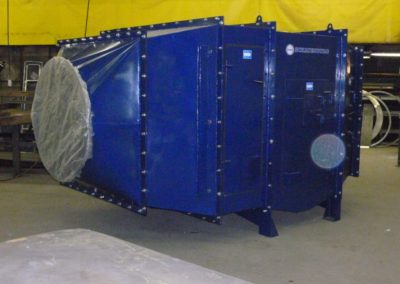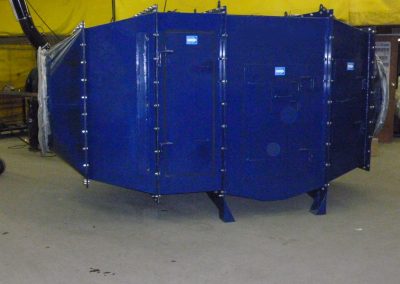Dust Collectors
Principles of Operation
The Spin Filter contains a series of tubes with stationary air spinners. Through centrifugal force contaminants are removed from the air stream as it is drawn through the tubes. The steps of purification are outlined below.
- Air is drawn or forced through the intake transition area and is mixed with water droplets from strategically placed sprays; the water droplets being sized from 3 to 20 microns.
- The water and dust particles attach to each other, and by centrifugal forces imparted by the Spin Filter, are separated from the main airstream and discharged through a water trap to disposal point as slurry.
- Clean air containing unused water droplets continues through the unit and is separated at the demister panel, the excess water being piped away with the underflow slurry.
The cleaned air passes through to the main fan and rejoins the exhaust air circuit, or is discharged to the ambient atmosphere. By adjusting the flow rates and pressure of the intake water line, large variations of dust capacity and air flow rates can be accommodated.
Advantages of the Wet Scrubber
- Collection of dust in a wetted form eliminates a secondary dust problem in disposal of collected material. Some dust presents a risk of explosion or fire hazard, the wet procedure significantly reduces or eliminates the hazard.
- Have the ability to handle high temperatures and moisture laden gases.
- With the fan on the clean air side of the collector, less power is required.
- With periodical flushing caking is not a problem.
- The principle mechanism is impacting of dust particles on the liquid droplets, created by nozzles.
- Has the inherent ability to humidify through the process of adding water vapour to the air stream through evaporation.


